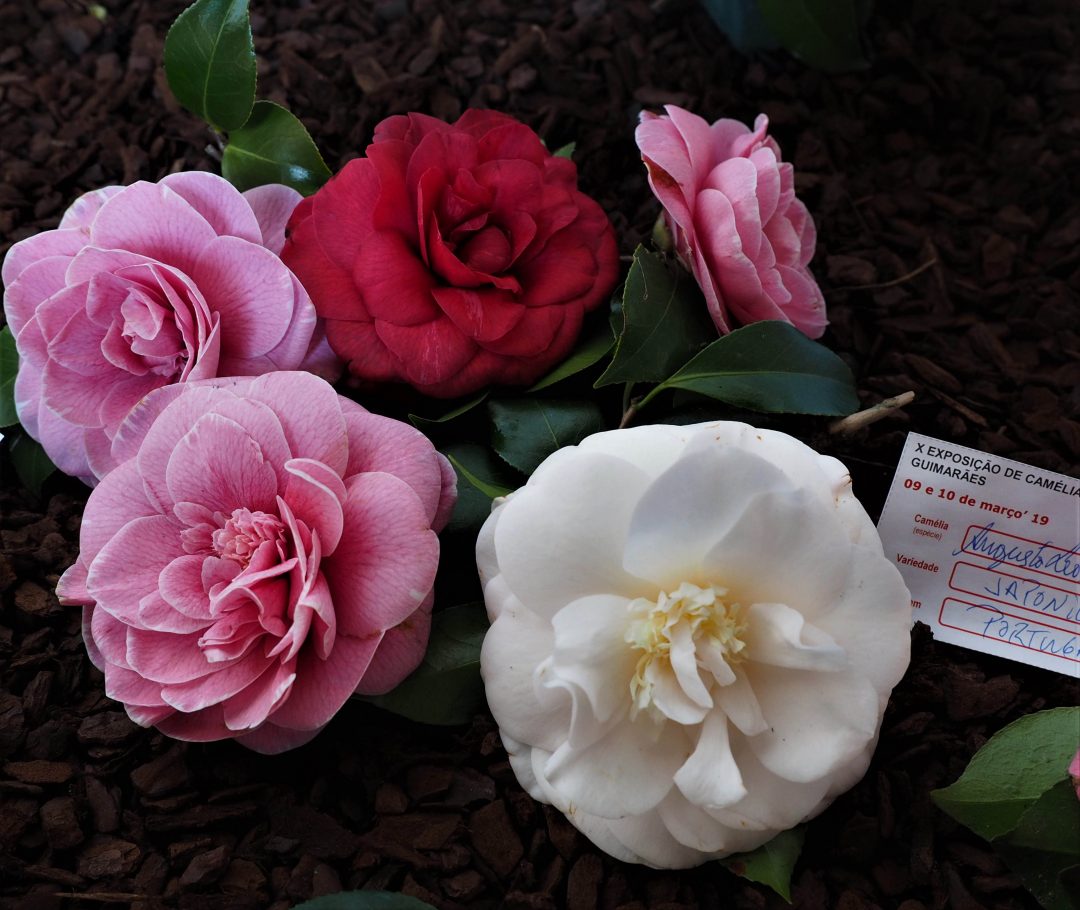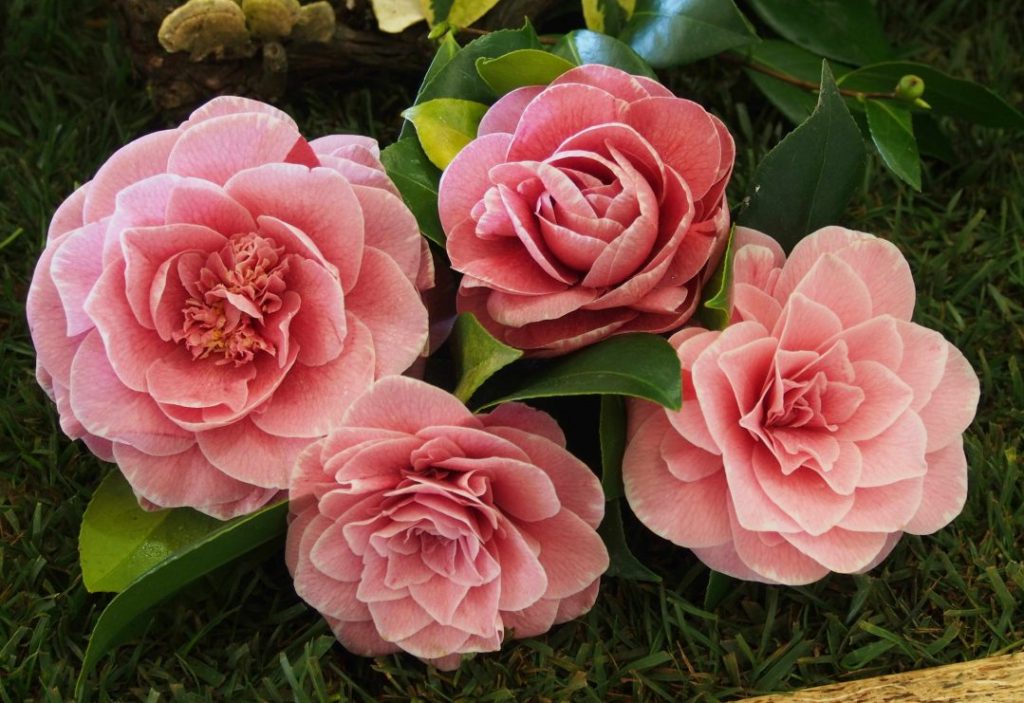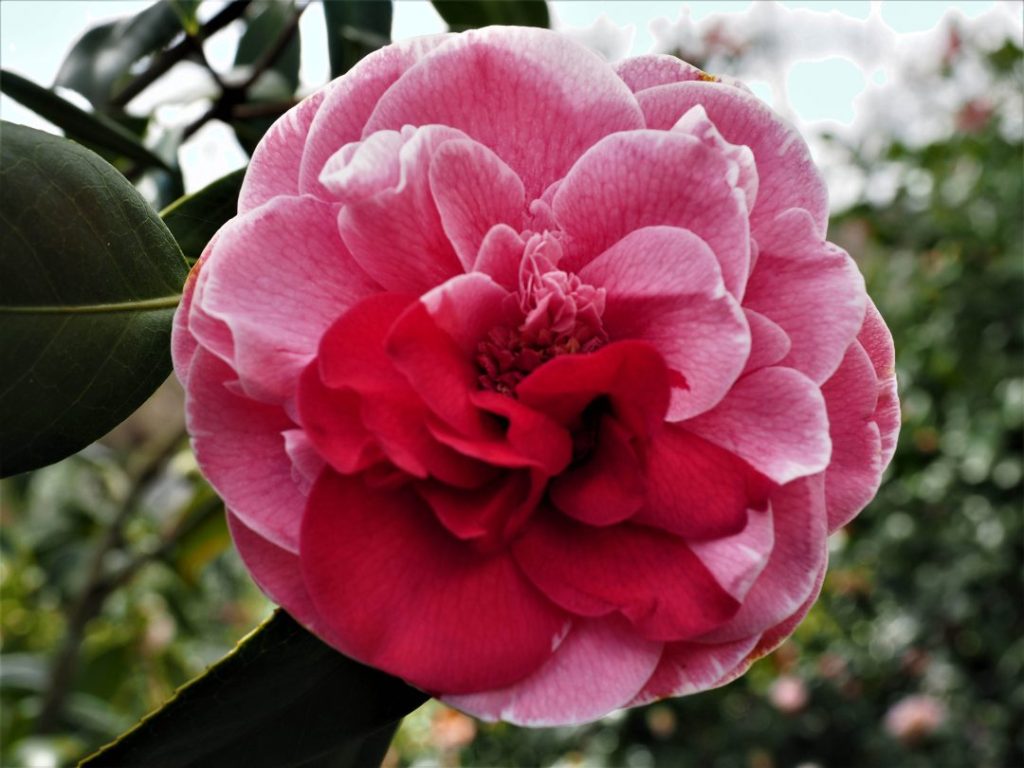山茶花:其颜色的秘密

Table of contents

 C. japonica 奥古斯托-莱尔-德-古韦亚-平托:来自同一棵树的花朵,有不同的颜色:正常、红色、浅粉色和白色。
C. japonica 奥古斯托-莱尔-德-古韦亚-平托:来自同一棵树的花朵,有不同的颜色:正常、红色、浅粉色和白色。 了解为什么山茶花的颜色各不相同,往往是在同一株植物上。
山茶花属于山茶科(Theaceae或Camelliaceae),在这个科里,属于山茶属。
性别 山茶花
它包括大约 三百种 最具代表性的是茶叶植物( 山茶树 )和观赏性物种( 山茶花、山茶花和网纹茶花 以及在较小的程度上感兴趣的是 茶树;茶树和油茶。 ).
但也有其他物种用于获得越来越多的种间杂交种。
See_also: 牛至的种植A 山茶花(Camellia japonica (日文中的 "tsubaki "指的是有浅色叶子的树)和 山茶花Sasanqua (sazanka, in Japanese)产生了今天大多数的观赏性品种。
性别 山茶花 其特点是包括中等大小的灌木状或树种,有互生的叶子;革质,深色,有光泽,有短叶柄,花有五瓣,螺旋状的花萼和花冠,花瓣在基部有点凝聚。
还请阅读文章《山茶花育种

 C. japonica 奥古斯托-莱尔-德-古维亚-平托:颜色正常,但左边的花有红色条纹
C. japonica 奥古斯托-莱尔-德-古维亚-平托:颜色正常,但左边的花有红色条纹 山茶花的颜色
根据种植的品种,花有各种颜色或色调:白色、红色、粉色、带色、紫色或黄色,大小不一,直径从不到5厘米到超过12.5厘米。
有时,一个 同来者 可以显示花与 色调 彻底 不同的 例如,白色和其他红色或粉红色,以及条纹、斑点、阵风、大理石纹或带色。
为什么山茶花会有变化
造成山茶花变异现象的基本原因有两个:遗传变异和病毒感染。
遗传变异铭刻在植物自身的基因中,并通过花瓣上的斑点、条纹、麻点或颜色变化的出现来体现。
病毒感染也会影响植物的活力,但由此产生的色调也确实产生了一些非常珍贵的品种,如'Ville de Nantes'日本茶花。
还有一些新的山茶花是通过自发突变产生的,对颜色或形状有影响,其机制很难解释,与物种本身的进化有关。
甚至带有不同形状和颜色的花朵的枝条也可以在植物本身上共存。
这些突变的枝条被称为 "运动",通过无性繁殖手段(嫁接),有可能(有时)从它们身上获得多年来具有完全固定特性的新的栽培品种。
还请阅读茶花:如何预防和治疗疾病
See_also: 关于东方芥末的一切
 Gouveia Pinto: 单一清单的花 C. japonica 奥古斯托-莱亚尔-德-古维亚-平托:部分红花
Gouveia Pinto: 单一清单的花 C. japonica 奥古斯托-莱亚尔-德-古维亚-平托:部分红花 遗传变异
在这一类型中 山茶花 大约有三百个物种,它们一直受到持续的自然或诱导杂交的影响。
在性别方面 山茶花 其自身的染色体数目为30,15是配子或生殖细胞中的基本染色体数目(n)。
这些只有一套染色体(n)的生殖细胞(男性和女性性细胞)被称为单倍体。
生殖细胞或配子起源于体细胞(2n),经历了称为配子发生的过程。
在配子发生过程中,通常会发生一个重要的细胞分裂过程,称为减数分裂或染色体减少(减数分裂I和减数分裂II),其中一个体细胞(2n)在转变为性细胞时,会产生四个单倍体细胞(n),使一个物种的染色体数量减半,从而通过与另一个性细胞结合的方式一个新的存在(2n)。
在植物界,这种机制并不总是这样运作:有时,上述染色体减少并不发生(未减少的配子),产生多倍体个体(Xn),它们有两套以上的染色体(基因组),这构成了一种新的机制,称为多倍体。
另请阅读文章《山茶花:护理指南
多倍体,即同一细胞核中存在两个以上的基因组,是植物中常见的现象,被认为是野生和栽培植物起源和进化中最显著的进化过程之一。
大约40%的栽培植物物种是多倍体,是通过非还原配子或不同物种的个体杂交而产生的。
由于大多数物种都是自我不相容的,自然界采用异花授粉,因此三倍体、四倍体、五倍体、六倍体、七倍体和八倍体的杂交形式自发发生。
山茶花中最常见的形式是二倍体和三倍体。
对栽培植物中这些机制的了解,导致研究人员诱发了多倍体属的 山茶花 因为一般来说,多倍体物种更大,产量更高。
这些方面是相关的,而且这些技术已经成功地用于例如获得具有更大叶片的茶树(以提高每公顷的生产水平),用于观赏茶花(增加花朵大小)和油茶花(增加产油量)。

